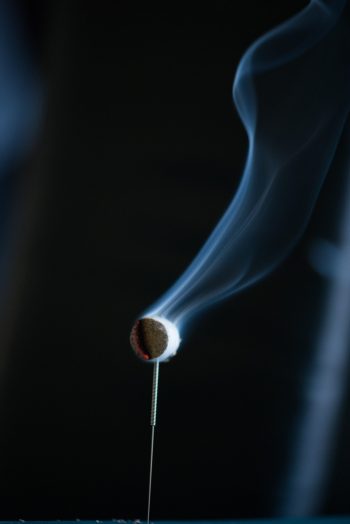offerings
Moxibustion
At Eastern Shore Acupuncture, moxa is incorporated into many treatments. Moxibustion is basically the burning, or smoldering, of an herb (specifically mugwort) over the surface of the skin. There is direct and indirect moxa –indirect moxa does not make contact with skin but rather is set atop needles or a medium such as a ginger slice or salt, or placed in a box or bowl with smoke directed toward skin. Direct moxa is carefully smoldered on the skin to stimulate channel or trigger points.
Moxa is one of the oldest therapies in Chinese medicine, and many scholars believe it predates acupuncture. Acupuncture and moxibustion evolved together, and are often used together in a treatment, both In Chinese and Japanese medicine. Its therapeutic effects are wide ranging and well documented.

Traditionally Moxa was burned to enhance longevity and ensure stamina, and to treat deeply entrenched illnesses. There are a many conditions for which moxibustion (or acu-moxa) is indicated and proven therapeutic; distal (meaning fingers and toes) sensory neuropathy in HIV, fetal malposition, diarrhea, and colitis, urinary incontinence and dysmenorrheal, knee osteoarthritis, temporomandibular joint disturbance syndrome, soft tissue injury, heel pain, asthma, urinary retention, and herpes zoster, symptom management for Crohn’s disease, IBS and tuberculosis. Moxibustion can also be used to treat weakness, fatigue, and aging related problems.
At Eastern Shore Acupuncture, only the finest, aged Japanese moxa is employed. Indirect moxa is burned via a box and placed on the abdomen or lower back to warm the torso, treat fatigue, gastro-intestinal problems such as diarrhea, and for fertility treatments. Burning moxa atop a needle is another indirect method, designed to warm up a larger area than an individual channel opening.
Direct moxa is applied Japanese style, either with the use of stick on, preformed moxa or tiny rice grain size moxa with underlying burn ointment. Direct moxa is excellent for knee pain and softening tight knots or cords of muscle, such as the IT Band and the muscles that cause sciatica type pain. Direct moxa is also indicated in many Japanese and classical Chinese internal treatments, in conjunction with acupuncture, for a wide range of conditions.


